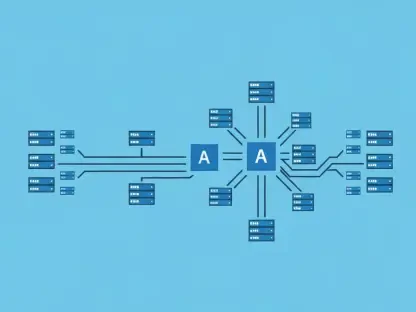In an era where cyber threats loom larger than ever, the Cybersecurity and Infrastructure Security Agency (CISA) has unveiled a pivotal draft of its “Minimum Elements for a Software Bill of Materials (SBOM),” signaling a major push to fortify software supply chain security. This updated guidance builds on earlier frameworks established by the National Telecommunications and Information Administration (NTIA), adapting to the rapid evolution of technology and the escalating risks posed by sophisticated cyberattacks. As software increasingly underpins critical infrastructure—from power grids to healthcare systems—the urgency to document and understand its components has become paramount. This draft aims to provide a clearer, more actionable standard for transparency, helping organizations identify vulnerabilities before they can be exploited. By releasing this document for public feedback, CISA underscores the importance of collective input in shaping a resilient cybersecurity landscape, setting the stage for a broader discussion on safeguarding digital ecosystems.
The Critical Importance of SBOMs in Modern Cybersecurity
A Software Bill of Materials, commonly known as an SBOM, serves as a comprehensive catalog of a software product’s components, libraries, and dependencies, much like a detailed recipe lists every ingredient in a dish. This draft guidance from CISA refines the approach to creating such inventories, offering organizations a vital tool to pinpoint vulnerabilities, manage risks, and adhere to stringent security standards. With high-profile supply chain attacks exposing systemic weaknesses in recent years, the role of SBOMs has shifted from optional to essential. They provide a window into the often opaque structure of software, enabling quicker identification of potential threats. For both government entities and private companies, this transparency is a cornerstone of building trust and resilience in an increasingly interconnected digital world, where a single flaw can cascade into widespread disruption.
Beyond mere documentation, SBOMs empower decision-makers with actionable insights to strengthen their cybersecurity posture. By mapping out the intricate web of dependencies within software, organizations can trace issues back to specific elements, allowing for targeted responses to emerging threats. This capability is particularly crucial in sectors like critical infrastructure, where downtime or breaches can have catastrophic consequences. CISA’s updated draft acknowledges the dynamic nature of cyber risks, incorporating lessons from past incidents to ensure that SBOMs remain relevant. The focus on detailed inventories also supports compliance with regulatory mandates, aligning with broader efforts to standardize security practices across industries. As cyber adversaries grow more sophisticated, the clarity provided by SBOMs stands as a first line of defense against the exploitation of hidden vulnerabilities.
Updates and Innovations in the Latest SBOM Framework
CISA’s newly released draft introduces significant updates to the SBOM framework, setting a higher standard for documentation to address the complexities of today’s software environments. New minimum elements, such as component hash, license information, tool name, and generation context, have been added to ensure a more thorough inventory of software parts. Additionally, existing requirements—like identifying the SBOM author, software producer, and component name—have been refined for greater clarity and consistency. These enhancements reflect a deep understanding of how technology and threat landscapes have evolved, ensuring that the guidance keeps pace with current needs. The emphasis on detailed, standardized documentation aims to close gaps that attackers might exploit, bolstering the overall security of software supply chains.
Another key aspect of the draft is its focus on machine-readable formats and scalable solutions, which are designed to integrate seamlessly into existing systems. This approach minimizes manual effort and enhances efficiency, allowing organizations to manage risks at scale through automation. By prioritizing formats that support data-driven decision-making, CISA aligns the guidance with broader trends in cybersecurity that favor speed and precision. The updates also address feedback from early adopters, incorporating practical insights to make SBOM implementation more feasible across diverse sectors. For federal agencies and private enterprises alike, these innovations signal a shift toward proactive risk management, where potential issues can be identified and mitigated before they escalate into full-blown crises. This forward-thinking framework underscores a commitment to staying ahead of cyber threats.
Collaborative Efforts and the Power of Public Input
Collaboration lies at the heart of CISA’s approach to developing the draft SBOM guidance, reflecting a recognition that no single entity can tackle supply chain security alone. The agency worked closely with industry stakeholders, interagency partners, and international allies to craft a framework that balances diverse needs and perspectives. This collective effort, as emphasized by Chris Butera, CISA’s acting executive assistant director for cybersecurity, ensures that the guidance promotes interoperability and scalability across sectors. By aligning expectations and standards, the draft fosters a unified front against cyber risks, encouraging adoption without resorting to rigid mandates. Such teamwork highlights the shared responsibility of protecting software ecosystems, especially in an era of globalized digital threats.
Equally significant is CISA’s invitation for public feedback, with a comment period open until October 3, demonstrating an inclusive stance on refining the guidance. This opportunity for input from a wide range of voices—spanning government, industry, and beyond—ensures that the final framework addresses real-world challenges and incorporates practical insights. The emphasis on public engagement reflects a commitment to creating a standard that resonates with the broader community, enhancing its effectiveness and relevance. By soliciting diverse opinions, CISA aims to bridge gaps in understanding and build consensus on best practices for SBOM implementation. This participatory process not only strengthens the guidance but also reinforces trust in the collaborative mechanisms driving cybersecurity advancements.
Looking Ahead to a More Secure Digital Future
Reflecting on the strides made, CISA’s release of the draft SBOM guidance marked a pivotal moment in the journey toward robust software supply chain security. The introduction of new elements and the refinement of existing standards showcased a keen awareness of the shifting cyber threat landscape. Through extensive collaboration with various stakeholders, the agency crafted a framework that prioritized transparency and actionable insights. The open comment period, which concluded on October 3, played a crucial role in gathering diverse feedback to shape the final version of the guidance.
Moving forward, the focus should shift to actionable implementation strategies, ensuring that organizations can adopt SBOMs effectively within their unique environments. Encouraging widespread use through education and support tools will be essential to maximize impact. Additionally, continued dialogue between public and private sectors can help address emerging challenges, fostering innovations that keep pace with technological advancements. As the final guidance takes shape, it holds the potential to redefine how software security is approached, paving the way for a more resilient digital infrastructure.









